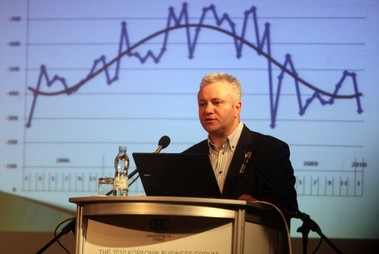- Serbia
Get to know Serbia
- Citizens
Culture and science
Health services
Pension and disability insurance
- Business
Employment
Economy
- Media
- Government
- Contact
Keep in touch
Contact form
Back
Keepin touch
Whether you have a question, comment, suggestion or any problem in the purview of the government, send us your message and we will try to respond as soon as possible. If your problem is not in our purview, we will forward your message to the relevant institution.
Q:
A:
Serbia needs economic growth based on exports, foreign investments
Kopaonik,
9 March 2010
Deputy Prime Minister and Minister of Economy and Regional Development Mladjan Dinkic said today at the Kopaonik Business Forum 2010 that Serbia should use the models of economic growth based on exports and attracting foreign investors.
Dinkic said that Serbia needs investments such as Fiat’s in Kragujevac because of the effects of such long-term investment, he said.
He warned that the share of exports in Serbia’s GDP is 19%, while in the EU it amounts to 50%.
The Minister said that the situation in Belgrade is not as dramatic as in other parts of Serbia, and stressed that high unemployment and low purchasing power are the current challenges that the government is facing.
He reiterated that the unfreezing of wages in September this year is necessary.
He announced that a formula for calculation of salaries needs to be discussed with representatives of the IMF.
Dinkic explained that the government's proposal is to adjust salaries according to the rate of inflation, plus half of the growth in GDP.
He also announced the increase of the lowest pensions.
This should cost more than RSD 10 billion or 0.3% of GDP, while all these measures will increase employment and demand, production and exports.
He announced that the competent ministries in cooperation with the National Bank of Serbia (NBS) will prepare a model of subsidised cash loans of up to €3,000 in the dinar counter value intended for the middle class, with a repayment period of three years and a one year grace period.
Dinkic also said that loans for public infrastructure are needed, recalling that around €1.2 billion has already been secured from international financial institutions for this purpose.
The Deputy Prime Minister concluded that the key issue in 2009 was to stop the decline, and in 2010 to speed up recovery.
He warned that the share of exports in Serbia’s GDP is 19%, while in the EU it amounts to 50%.
The Minister said that the situation in Belgrade is not as dramatic as in other parts of Serbia, and stressed that high unemployment and low purchasing power are the current challenges that the government is facing.
He reiterated that the unfreezing of wages in September this year is necessary.
He announced that a formula for calculation of salaries needs to be discussed with representatives of the IMF.
Dinkic explained that the government's proposal is to adjust salaries according to the rate of inflation, plus half of the growth in GDP.
He also announced the increase of the lowest pensions.
This should cost more than RSD 10 billion or 0.3% of GDP, while all these measures will increase employment and demand, production and exports.
He announced that the competent ministries in cooperation with the National Bank of Serbia (NBS) will prepare a model of subsidised cash loans of up to €3,000 in the dinar counter value intended for the middle class, with a repayment period of three years and a one year grace period.
Dinkic also said that loans for public infrastructure are needed, recalling that around €1.2 billion has already been secured from international financial institutions for this purpose.
The Deputy Prime Minister concluded that the key issue in 2009 was to stop the decline, and in 2010 to speed up recovery.
-
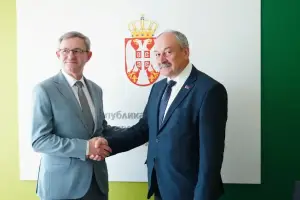 Belgrade, 11 July 2025
Belgrade, 11 July 2025Potential for improving cooperation with Belarus in many areas
-
 Požega, 5 July 2025
Požega, 5 July 2025Section of Pakovraće - Požega highway officially opened
-
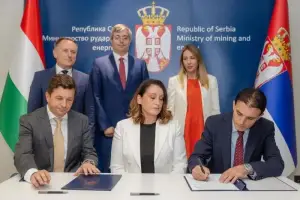 Belgrade, 2 July 2025
Belgrade, 2 July 2025Technical specifications defined for Serbia-Hungary oil pipeline
-
 Belgrade, 30 June 2025
Belgrade, 30 June 2025IMF confirms Serbia successfully implementing all agreed reforms
-
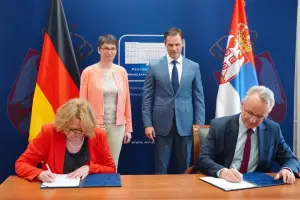 Belgrade, 27 June 2025
Belgrade, 27 June 2025Double Taxation Avoidance Agreement with Germany signed
-
 Kostolac, 25 June 2025
Kostolac, 25 June 2025Construction of Kostolac wind farm nearing completion
-
 Belgrade, 24 June 2025
Belgrade, 24 June 2025Government supports request for new postponement of sanctions against NIS
-
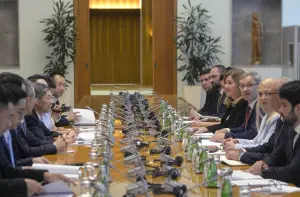 Belgrade, 23 June 2025
Belgrade, 23 June 2025Procedures to facilitate sale of Serbian products to China to be accelerated
-
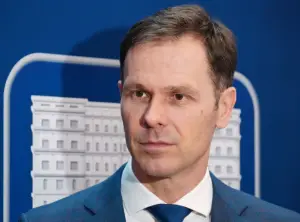 Belgrade, 21 June 2025
Belgrade, 21 June 2025Serbia receives first funds under Growth Plan for the Western Balkans
-
 Belgrade/Cairo, 20 June 2025
Belgrade/Cairo, 20 June 2025New phase in relations with Egypt in field of agriculture

